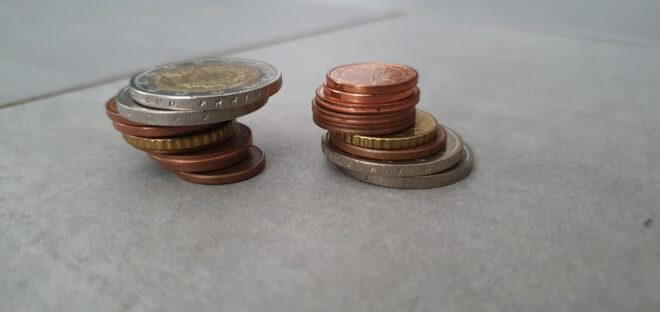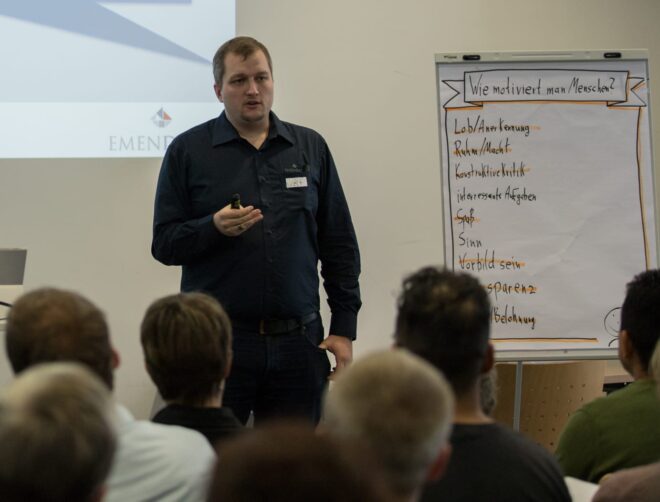A short, insightful game to review motivational effects and their impact onto us.

I use this game within my “Ikigai” presentation. In there I talk about motivation, the 4 areas of intrinsic motivation and how to foster the thinking about that topic. The coin Sort Game or tower of Babel -as some call it- is inspired by the facilitation mechanics of the name game by Henrik Kniberg.
First Step – Gather Suggestions
I ask the attendees: “Imagine you were asked by a customer to motivate their team -stupid, right?-.
However, what actions could you do, which motivational levers could you name?”
Gather all the given ideas (no matter how surprising they sound) onto a flip chart. Try to gather around 8-12 things here.

The coin tower
Next, ask every participant that you need the most important thing from them: Their money!
Everyone should try to get 6 coins out of his purse, ideally in varying sizes.
Ask them to do the following: “On your palm, sort the coins in size not value, from the largest coin to the smallest coin.”
“Everyone’s done? Great! Now sort them from the smallest to the biggest coin. But not by flipping the whole tower, but one by one.”
When everyone understood the core mechanics, tell them that you will insert some competition (ideally, you even got it as a suggestion in the first part). They will have to do this sorting as often as possible in a given time. You are interested in whose the fastest!
Count down “3,2,1” and share a broadly visible timer to everyone of 15 minutes…
The reactions
Typically, you will see four different groups
- The doubter
They don’t start the exercise and will look at you a bit puzzled.
They will be skeptical if you as a facilitator are a bit dumb, or you really don’t value their time. Endure their stare. 🙂 - The quick thinker
He/She will also not start the exercise, but will most likely look at you with a smile. - The “Misreader”
They will start the exercise and sort the tower like 5 to 8 times until they take a look onto the clock again to see that it’s not 15 seconds, but 15 minutes. - The persevered
If you don’t stop them, they would do the exercise for the whole 15 minutes! After 2-3 minutes, stop them.
It will be hard for you as a facilitator to endure the situation and the puzzled faces. Endure it! In this specific moment, a lot is happening in the mind of the participants! In some faces, you might even see the learning journey of those 2-3 minutes.
The aftermath
After you stopped all the participants, take the motivation poster again and go through all of those items and ask if they would do that exact same job if you give them those motivational factors!
gummy bears all you can eat? ⇾ NO
4 days per week instead of 5? ⇾ NO
the manager praises them every day? ⇾ NO
a salary of 120k $ per year if they do this job for the rest of their life? ⇾ Most probably NO
if this repetitive job could save lives? ⇾ Hmmm… Now it gets interesting.
I use this exercise to now head over to Ikigai and the motivational factors of everyday life. An easier transition would be to speak about “purpose, significance and achieveability”.
I hope you have fun using this exercise. If anything is puzzling, feel free to reach out 🙂 veit.richter@emendare.de
